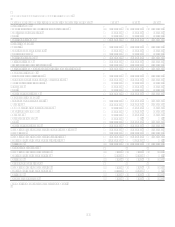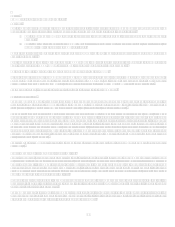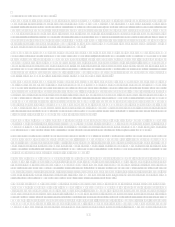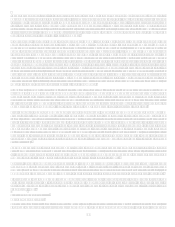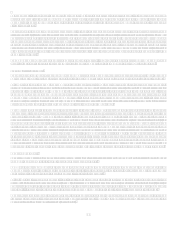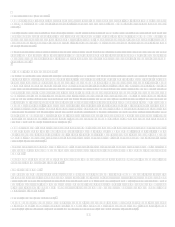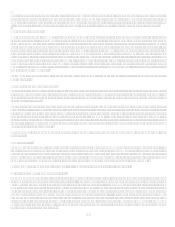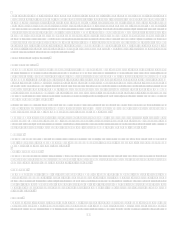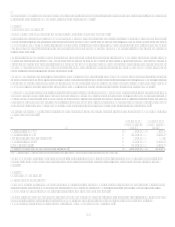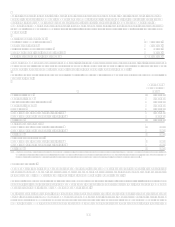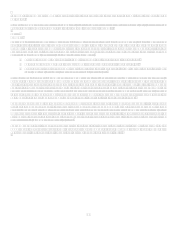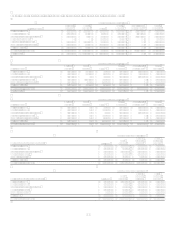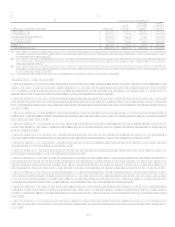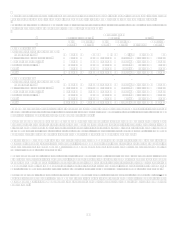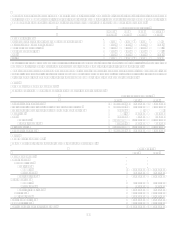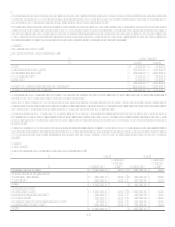Capital One 2007 Annual Report Download - page 95
Download and view the complete annual report
Please find page 95 of the 2007 Capital One annual report below. You can navigate through the pages in the report by either clicking on the pages listed below, or by using the keyword search tool below to find specific information within the annual report.73
For derivative instruments that are designated and qualify as fair value hedges (i.e., hedging the exposure to changes in the fair value
of an asset or a liability or an identified portion thereof that is attributable to a particular risk), the gain or loss on the derivative
instrument as well as the offsetting loss or gain on the hedged item attributable to the hedged risk is recognized in current earnings
during the period of the change in fair values. For derivative instruments that are designated and qualify as cash flow hedges (i.e.,
hedging the exposure to variability in expected future cash flows that is attributable to a particular risk), the effective portion of the
gain or loss on the derivative instrument is reported as a component of other comprehensive income and reclassified into earnings in
the same period or periods during which the hedged transaction affects earnings. The remaining gain or loss on the derivative
instrument in excess of the cumulative change in the present value of future cash flows of the hedged item, if any, is recognized in
current earnings during the period of change. For derivative instruments that are designated and qualify as hedges of a net investment
in a foreign operation, the gain or loss is reported in other comprehensive income as part of the cumulative translation adjustment to
the extent it is effective. For derivative instruments not designated as hedging instruments, the gain or loss is recognized in current
earnings during the period of change in the fair value.
See Note 25 for additional detail.
Revenue Recognition
The Company recognizes earned finance charges, interest income and fee income on loans according to the contractual provisions of
the credit arrangements. For credit card loans, when the Company does not expect full payment of finance charges and fees, it does
not accrue the estimated uncollectible portion as income (hereafter the suppression amount). To calculate the suppression amount,
the Company first estimates the uncollectible portion of credit card finance charge and fee receivables using an estimate of future non-
principal losses. This formula is consistent with that used to estimate the allowance related to expected principal losses on reported
loans. The suppression amount is calculated by adding any current period change in the estimate of the uncollectible portion of finance
charge and fee receivables to the amount of finance charges and fees charged-off (net of recoveries) during the period. The Company
subtracts the suppression amount from the total finance charges and fees billed during the period to arrive at total reported revenue.
The amount of finance charge and fees suppressed were $1.1 billion, $0.9 billion and $1.0 billion for the years ended December 31,
2007, 2006 and 2005, respectively.
Interchange income is a discount on the payment due from the card-issuing bank to the merchant bank through the interchange
network. Interchange rates are set by MasterCard International Inc. (MasterCard) and Visa U.S.A. Inc. (Visa) and are based on
cardholder purchase volumes. The Company recognizes interchange income as earned.
Annual membership fees and direct loan origination costs are deferred and amortized over one year on a straight-line basis. Dealer
fees and premiums are deferred and amortized over the average life of the related loans using the interest method for auto loan
originations. Direct loan origination costs consist of both internal and external costs associated with the origination of a loan. Deferred
fees (net of deferred costs) were $389.7 million and $372.2 million as of December 31, 2007 and 2006, respectively.
Marketing
The Company expenses marketing costs as incurred. Television advertising costs are expensed during the period in which the
advertisements are aired. The amount of marketing expense was $1.3 billion, $1.4 billion and $1.4 billion for the years ended
December 31, 2007, 2006 and 2005, respectively.
Credit Card Fraud Losses
The Company experiences fraud losses from the unauthorized use of credit cards. Transactions suspected of being fraudulent are
charged to non-interest expense after a 60 day investigation period. Recoveries related to balances treated as fraud losses are also
recognized in non-interest expense. See note 13 for total fraud losses.
Income Taxes
The Company accounts for income taxes in accordance with SFAS No. 109, Accounting for Income Taxes, recognizing the current and
deferred tax consequences of all transactions that have been recognized in the financial statements using the provisions of the enacted
tax laws. Deferred tax assets and liabilities are determined based on differences between the financial reporting and tax bases of assets
and liabilities and are measured using the enacted tax rates and laws that will be in effect when the differences are expected to reverse.
Valuation allowances are recorded to reduce deferred tax assets to an amount that is more likely than not to be realized. See Note 14
for additional detail.
Segments
The accounting policies of operating and reportable segments, as defined by the Statement of Financial Accounting Standard No. 131,
Disclosures about Segments of an Enterprise and Related Information, (SFAS 131) are the same as those described elsewhere in
this footnote. Revenue for all segments is derived from external parties. Performance evaluation of and resource allocation to each


